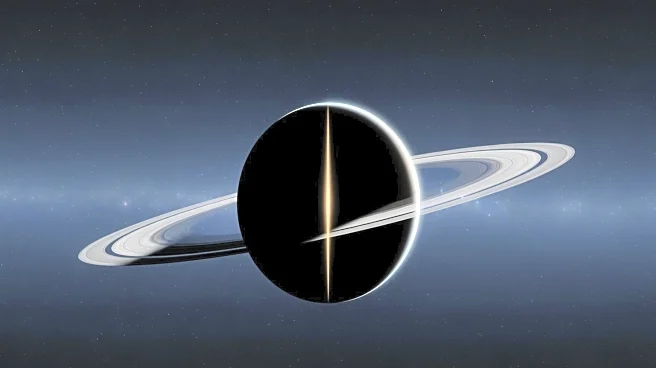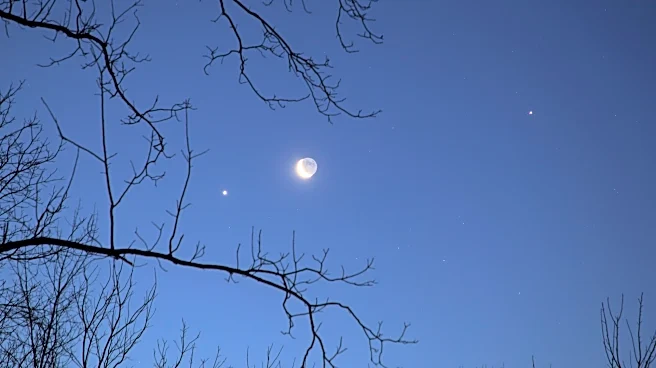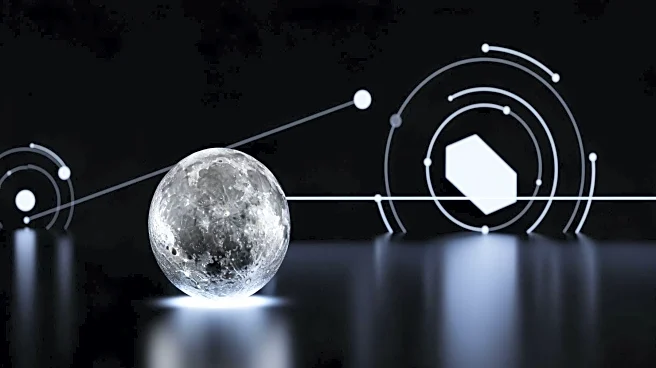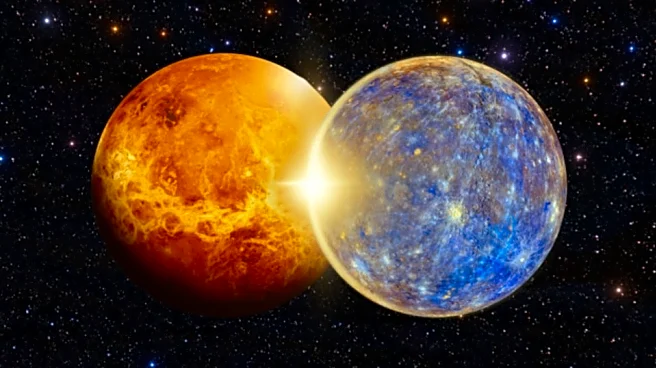What's Happening?
Astronomy enthusiasts have a unique opportunity to observe Lacus Mortis, a lava-filled crater on the Moon, as it becomes visible for the second time this month. On November 24, 2025, Mercury was visible near
Venus before sunrise, requiring optical aid for clear identification. The crescent Moon, nearly six days old, appears in the southwest after dark, located in western Capricornus. Lacus Mortis, with a diameter of approximately 100 miles, is illuminated, showcasing its hexagonal shape and geological features, including a rille formed by ground fracturing. The prominent crater Burg within Lacus Mortis is also visible, characterized by its central peak and slumped outer walls.
Why It's Important?
This celestial event provides astronomers and hobbyists with a chance to study lunar topography and geological activity. Observing Lacus Mortis can enhance understanding of the Moon's history and surface dynamics, contributing to broader lunar research. Such events also engage the public in astronomy, fostering interest in space exploration and science education. The visibility of Mercury and Venus offers additional observational opportunities, promoting the use of telescopes and binoculars for amateur astronomers.












